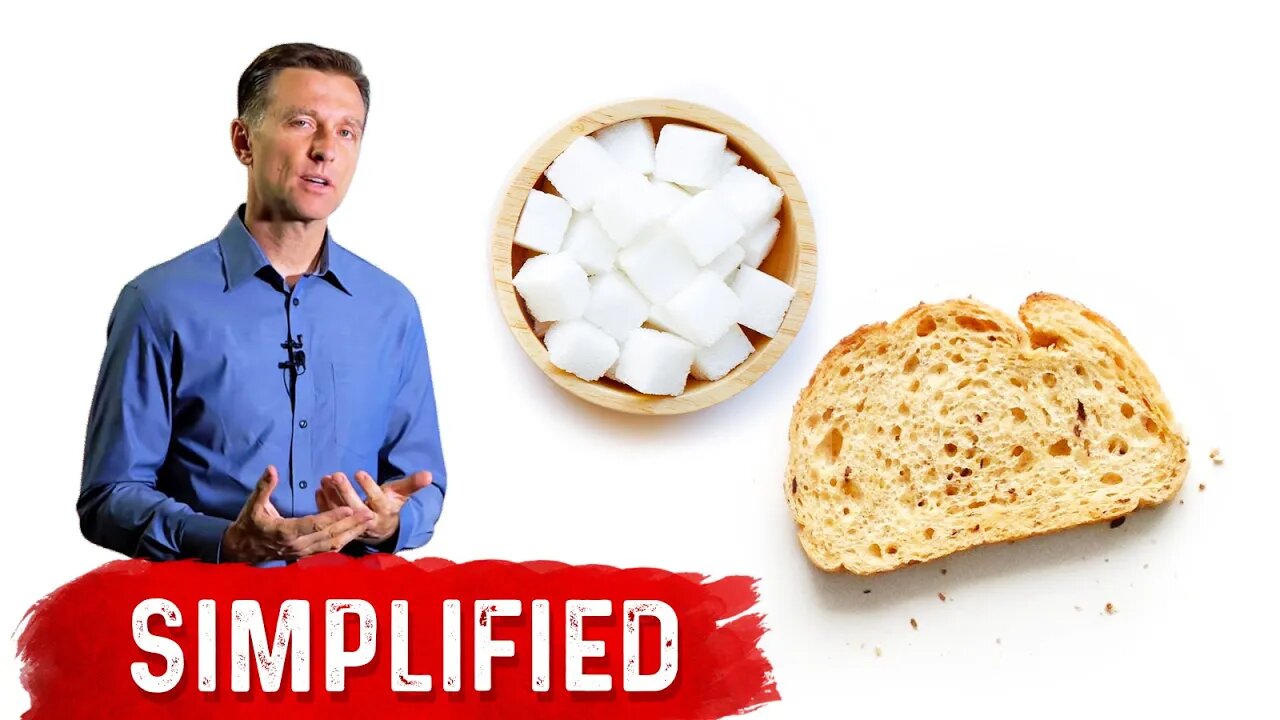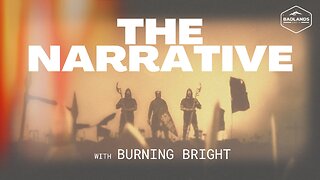Premium Only Content

Carbs vs. Sugar Clarified
Carbs and sugars: what’s the difference? Find out!
Timestamps
0:00 Introduction
0:25 Carbs vs. sugars clarified
2:22 What is fiber?
3:01 Processed foods and the glycemic index
3:42 Starchy vs. non-starchy vegetables
4:22 Bulletproof your immune system *free course!
In this video, we’re going to talk about the difference between carbs and sugars.
On a Healthy Keto diet, you want to keep your carbs under 50g per day—preferably around 20g per day.
Carbohydrates are a combination of starches, fibers, and sugars.
Sugars are smaller carbohydrate molecules. For instance, sucrose is a disaccharide, which means that it is made up of two (di, meaning two) simple carbohydrate molecules.
Fructose and glucose are monosaccharides, which are made up of one (mono, meaning one) molecule.
Starches are complex carbohydrates.
Complex carbohydrates are broken down into two categories: oligosaccharides and polysaccharides. Oligosaccharides have between 3 and 20 molecules, and polysaccharides have more than 20 molecules.
Then, we have fiber. We deduct fiber from the total carbs because, even though fiber is a carbohydrate, it can’t be broken down by our digestive systems.
Microbes can break down fiber, so fiber is great for supplying your gut microbes with nutrients.
Fiber does not affect your blood sugars like other carbohydrates.
Let’s talk about the glycemic index (GI). The GI tells you how fast a particular carbohydrate turns into blood glucose and affects your blood sugar level.
For example, a raw potato would be relatively low on the GI because the starch isn’t going to break down very quickly. However, cooked potatoes or a bag of potato chips would be much higher on the glycemic index because they are broken down much more quickly, thus causing a spike in blood sugar.
The goal is to consume foods that are low in sugars and carbs but higher in fiber to help keep your blood sugar levels normal.
Some vegetables are very starchy, which means it is high in carbohydrates. Potatoes, carrots, and beats all have higher amounts of carbs compared to leafy greens, asparagus, celery, and broccoli. You don’t have to count your carbs when it comes to non-starchy vegetables.
Dr. Eric Berg DC Bio:
Dr. Berg, age 58, is a chiropractor who specializes in Healthy Ketosis & Intermittent Fasting. He is the author of the best-selling book The Healthy Keto Plan, and is the Director of Dr. Berg Nutritionals. He no longer practices, but focuses on health education through social media.
DR. BERG'S SHOP: https://bit.ly/3i8c4yS
Follow us on FACEBOOK: https://fb.me/DrEricBerg
Send a Message to his team: https://m.me/DrEricBerg
ABOUT DR. BERG: https://bit.ly/3wMairw
Disclaimer:
Dr. Eric Berg received his Doctor of Chiropractic degree from Palmer College of Chiropractic in 1988. His use of “doctor” or “Dr.” in relation to himself solely refers to that degree. Dr. Berg is a licensed chiropractor in Virginia, California, and Louisiana, but he no longer practices chiropractic in any state and does not see patients so he can focus on educating people as a full time activity, yet he maintains an active license. This video is for general informational purposes only. It should not be used to self-diagnose and it is not a substitute for a medical exam, cure, treatment, diagnosis, and prescription or recommendation. It does not create a doctor-patient relationship between Dr. Berg and you. You should not make any change in your health regimen or diet before first consulting a physician and obtaining a medical exam, diagnosis, and recommendation. Always seek the advice of a physician or other qualified health provider with any questions you may have regarding a medical condition.
#keto #ketodiet #weightloss #ketolifestyle
Thanks for watching. I hope this helped explain the difference between carbs and sugars. I’ll see you in the next video.
-
 5:36
5:36
Dr. Eric Berg
23 hours agoTHE BIGGEST LIE
4.16K10 -
 LIVE
LIVE
Lofi Girl
2 years agoSynthwave Radio 🌌 - beats to chill/game to
442 watching -
 1:15:31
1:15:31
TheDozenPodcast
16 hours agoKevin Lane Exclusive after Prison Release | I Thought I’d Die in Jail
3.33K -
 1:44:58
1:44:58
The Pascal Show
11 hours ago $1.80 earnedMANHUNT UNDERWAY! Cops Search For Vance Boelter! WIFE DETAINED?! Press Conference
6.8K2 -
 26:18
26:18
Degenerate Plays
13 hours ago $0.25 earnedJust A Little Oopsie! - Batman: Arkham Asylum : Part 4
4.75K -
 1:20:03
1:20:03
Side Scrollers Podcast
1 day agoSide Scrollers KING OF THE COUCH Pre-Show
78.4K8 -
 11:42
11:42
Lacey Mae ASMR
12 hours ago $0.28 earnedASMR Goodnight to Everyone Except...
4.81K3 -
 22:55
22:55
SB Mowing
2 months ago“Never in a MILLION YEARS did I think this would happen” - An update on Beth
22.3K57 -
 8:46
8:46
Russell Brand
15 hours agoWatch View Hosts FACE OFF Over Trump Elon Spat
73.9K47 -
 3:47:53
3:47:53
Badlands Media
1 day agoThe Narrative Ep. 26: The Plan to Save the World
86.2K27